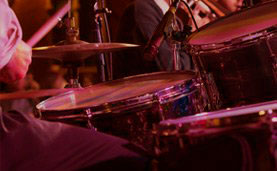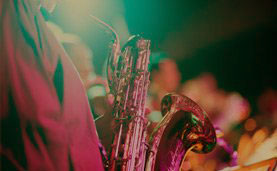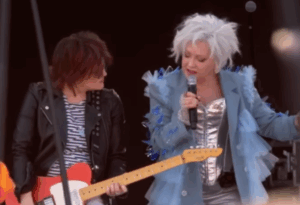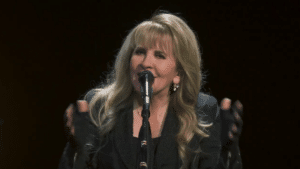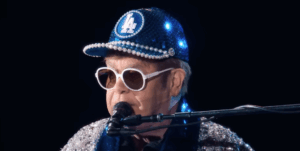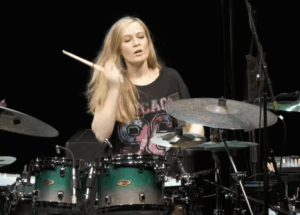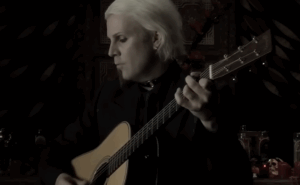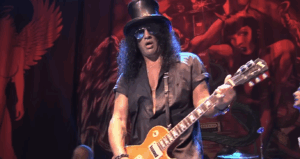The 20 Reasons Why Growing Up In the 1970s Is Unbeatable
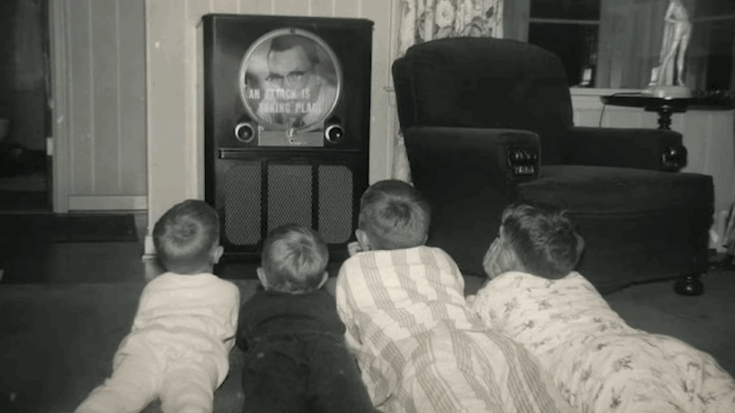
via America Nostalgia / YouTube
Childhood in the 1970s carried a magic that can’t quite be replicated today. It was a time when life felt slower, friendships were forged face-to-face, and entertainment didn’t require a screen. Days were filled with neighborhood adventures, backyard games, and the soundtrack of vinyl records spinning in the background. The decade offered a perfect mix of creativity, independence, and cultural discovery that gave kids a sense of both freedom and belonging.
What set the era apart wasn’t just the music, fashion, or television shows—it was the spirit of simplicity. Children learned to turn the ordinary into the extraordinary, whether through bike rides that lasted until dusk or imaginative games that turned sidewalks into stages. Without the constant pull of digital distractions, the 1970s allowed space for real connection and authentic play. That balance of innocence and innovation gave the decade its unforgettable charm.
This article takes a closer look at what made the 1970s such a special time to grow up. We’ll explore twenty reasons that prove why the era remains unmatched, from iconic cultural staples to the everyday joys that shaped childhood. For anyone who lived it—or simply wishes they had—these moments reveal why the 1970s hold a lasting place in our collective memory.
1. The Soundtrack of a Generation
The 1970s were defined by an incredible music scene that shaped the culture and the spirit of the time. Classic rock anthems and disco beats filled the airwaves, creating a musical backdrop that fueled energy, emotion, and social connection. Bands like Led Zeppelin, The Rolling Stones, and disco icons like Donna Summer brought people together, making music not just entertainment but a shared experience of joy and rebellion.
Children and teenagers grew up listening to vinyl records, eight-tracks, and cassettes, formats that made enjoying music a tactile and personal ritual. Album covers were works of art, and flipping a record or cassette to hear the flip side was part of the adventure. Music wasn’t just background noise; it was the pulse of a generation, teaching expression, emotion, and the power of rhythm.
Disco clubs and rock concerts embodied the energy of the era, and music influenced everything from fashion to language. For many, the sounds of the ‘70s remain the original soundtrack of freedom and fun, a time before digital playlists when music was a communal and deeply felt experience.
2. Saturday Morning Cartoons
Saturday mornings in the 1970s were sacred for kids, marked by hours of dedicated cartoon programming that was unlike anything today’s streaming can replicate. This block of television was a ritual, filled with classic animated shows that sparked imagination and laughter across generations. Characters from “Scooby-Doo,” “Jonny Quest,” and “Groovy Ghoulies” brought adventure, mystery, and humor into living rooms nationwide.
Watching cartoons wasn’t just passive entertainment; it was an event that brought families and friends together. Kids would gather with cereal bowls in hand, excited to see the latest episodes of beloved characters. The collective experience of waiting for a favorite show and discussing storylines created social ties that extended beyond the television screen.
These cartoons often featured catchy songs and memorable stories that became part of childhood culture. Unlike today’s endless on-demand options, the anticipation and scheduled nature of Saturday mornings added to the excitement and made those moments unforgettable.
https://twitter.com/VautourDennis/status/1951644429640405366
3. Playing Outside Until Dark
One of the defining aspects of growing up in the ‘70s was the unparalleled freedom children had to roam and play outdoors. Without today’s digital distractions and the anxiety of hyper-monitoring, kids were encouraged to explore their neighborhoods, invent games, and build lifelong friendships. Playing outside until the streetlights came on was a daily rhythm that instilled independence and creativity.
Neighborhoods were safe zones for adventures; kids could bike, climb trees, or organize games without constant adult supervision. The accelerated pace of life was slower, allowing children to immerse themselves fully in physical play and community interaction. This freedom fostered resilience, social skills, and a deep connection to the natural world.
Parents in the ‘70s balanced safety with trust, knowing that kids needed space to learn through play. This era’s outdoor experiences are treasured memories for many, reflecting a time when childhood was about discovery and joy in the simplest things.
4. The Magic of Vinyl Records
In the 1970s, music was predominantly experienced through vinyl records, which created an intimate relationship between the listener and the music. Holding the large album cover, appreciating the artwork, and carefully placing the needle on the spinning record were rituals that connected listeners deeply to their favorite artists and songs.
Unlike digital music today, vinyl records required patience and attention—they invited listeners to experience albums as complete works of art rather than isolated tracks. The warm, rich sound quality of vinyl is still celebrated by audiophiles, making it a symbol of music’s golden age. Collecting records and trading albums were popular pastimes, reinforcing music’s social and cultural importance.
Vinyl’s tactile nature made music physical and real, a sensory experience that went beyond mere sound. For many, the sound of a crackling vinyl needle remains the unmistakable hallmark of 1970s music nostalgia.
5. Iconic Fashion Trends That Defined an Era
The 1970s were a decade of bold and memorable fashion that reflected the rebellious and creative spirit of the time. From bell-bottom jeans and platform shoes to tie-dye shirts and polyester leisure suits, fashion was an expression of individuality and cultural shifts. Kids growing up in the ‘70s proudly wore styles that today evoke instant nostalgia and cultural identity.
Fashion wasn’t just about clothes but about attitude—a vibrant mix of disco glam, hippie influence, and early punk rock rebellion. Hairstyles like shag cuts and afro styles also became powerful symbols of personality and cultural pride. For children and teenagers, dressing up was fun, playful, and a way to belong to the vibrant cultural conversation of the decade.
The lasting influence of 1970s fashion can still be seen today in retro revivals and music culture, underscoring how this decade’s style choices remain iconic and beloved.
6. The Rise of Home Video Games and Arcades
The 1970s marked the beginning of home video gaming and the arcade boom, introducing kids to interactive digital entertainment for the first time. Classic arcade games like “Pong” and “Space Invaders” captured imaginations with their simple yet addictive gameplay and pixelated graphics. These games became a fun social experience, bringing friends together to challenge each other for the highest score.
Home video game consoles like the Atari 2600 allowed kids to bring the arcade excitement into their living rooms, creating a whole new way of playing and bonding over games. This era laid the foundation for the gaming culture that has become a dominant entertainment medium today. The novelty and charm of early gaming made it a magical and pioneering time for technology-loving youth.
Arcades themselves became cultural hubs where kids could spend hours playing, making friends, and experiencing a mix of competition and community. The combination of physical spaces and home consoles in the ‘70s harnessed the excitement of technology in a way that felt fresh and futuristic, setting the stage for decades of innovation.
7. The Era of Blockbuster Movies
The 1970s were a landmark decade for blockbuster movies, redefining cinema and how kids experienced storytelling on the big screen. Films like “Star Wars,” “Jaws,” and “Close Encounters of the Third Kind” created cultural phenomena that united audiences in awe and excitement. These movies offered epic adventures, thrilling scares, and imaginative worlds that fired up young minds.
Going to the movie theater was a special event, an opportunity to escape the ordinary and immerse oneself in stories packed with heroes, villains, and spectacular effects. The rise of blockbuster films in the ‘70s also brought about merchandising crazes, with toys and memorabilia that extended the magic far beyond the screen. Childhood memories were deeply tied to these cinematic experiences.
The decade’s innovative filmmaking techniques and iconic soundtracks set new standards in entertainment, inspiring generations of filmmakers and fans alike. Watching these blockbuster movies as a kid created shared cultural touchstones that still resonate in pop culture today.
8. Saturday Night Fever and the Disco Movement
Disco music and culture exploded in the 1970s with the release of “Saturday Night Fever” and its iconic soundtrack. The pulsating beats and dance-floor energy invited people of all ages to let loose and enjoy the rhythm of the moment. Disco wasn’t just music; it was a lifestyle marked by flashy fashion, dance moves, and vibrant nightlife.
Children growing up in this era felt the cultural electricity of disco through popular music and the rise of dance shows, radio hits, and social events. It influenced fashion trends like bell-bottom pants, platform shoes, and glittery accessories, making the disco vibe impossible to ignore. The sense of fun and liberation that disco promoted offered an unforgettable backdrop to growing up in the ‘70s.
Disco also played an important role in promoting social inclusion, breaking down barriers across race and gender through dance and music. The cultural imprint of disco continues to influence music and style today, a testament to the power of an era that celebrated joy, freedom, and community spirit.
9. The Joy of Mixtapes and Cassettes
Before digital playlists, kids and teens in the ‘70s created mixtapes on cassette tapes, which were personalized compilations of favorite songs recorded from the radio or vinyl. Making a mixtape was a labor of love and a creative act that allowed young people to express their moods, personalities, and friendships through music.
The cassette tape’s portability meant music could go anywhere—on car rides, bike rides, or simply hanging out with friends. Listening to mixtapes was an intimate experience that connected people through shared sounds, providing a soundtrack for everyday life. The physical act of recording and the choices involved made mixtapes treasured keepsakes.
For many, mixtapes were early forms of music curation and a way to bond over songs, moods, and emotions. The cassette tape era represents a bridge between the analog warmth of vinyl and the digital convenience that would come later, capturing a special chapter in musical nostalgia.
10. Bell-Bottoms, Platform Shoes, and More
The 1970s fashion scene made an indelible mark with statements like bell-bottom pants, platform shoes, and psychedelic prints. This era celebrated boldness and individuality in dress, encouraging kids and teens to experiment with looks that reflected the decade’s playful and rebellious spirit.
The popularity of flared jeans and colorful, patterned fabrics showed a clear break from previous conservative styles, while platform shoes added height and flair that matched the disco vibe perfectly. Children growing up in this decade were influenced daily by fashion trends seen on television, music stars, and their peers, fostering creativity and self-expression.
Beyond style, the fashion of the ‘70s symbolized broader social and cultural shifts, including freedom, liberation, and a vibrant youth culture that challenged norms. These iconic looks continue to evoke nostalgia and inspire retro revivals, showing how 1970s fashion forged a lasting cultural legacy.
https://twitter.com/freauxmama/status/1914232561716416991
11. Saturday Morning Live-Action Shows
Alongside animated favorites, the 1970s brought live-action shows to Saturday mornings that added an exciting variety to kids’ weekend routines. Shows like “Shazam!,” “Isis,” and “The Banana Splits” blended adventure, superhero tales, and musical fun, keeping viewers entertained in different ways. These programs allowed kids to see their heroes come to life on screen, making the weekend feel special and dynamic.
Live-action shows often featured engaging storylines and characters that sparked imagination and inspired play. With action figures and toys tied to these series, children connected even further with the stories they watched. This blend of animation and live-action created a well-rounded Saturday morning experience that was unlike any other time of the week.
Watching these shows was a social event, too, as kids often discussed their favorite episodes at school or on playgrounds, continuing the excitement beyond the television. This unique mix of formats made Saturday mornings a truly magical time in the ‘70s childhood experience.
12. Iconic TV Shows for the Whole Family
The 1970s featured many iconic TV shows that the whole family could enjoy together, creating shared entertainment moments. Programs like “The Brady Bunch,” “Happy Days,” and “MAS*H” were not just background noise but central parts of family life, sparking laughter, drama, and connection. These shows captured the cultural and social moods of the decade with relatable stories and memorable characters.
The family-centric nature of these shows helped establish a communal viewing habit, where parents and kids could watch content side by side. The humor, values, and situations often reflected the evolving society, offering entertainment that was both fun and meaningful. Watching these shows became a bonding ritual for many households.
Beyond entertainment, these iconic series influenced fashion, language, and attitudes, embedding themselves into the cultural fabric of the time. Their enduring popularity is a testament to the power of 1970s television in shaping generations.
https://twitter.com/WillieHandler/status/1689221911803289600
13. The Charm of Retro Toys and Board Games
The 1970s were a golden era for toys and board games that encouraged hands-on play and family interaction. Classic toys like the Rubik’s Cube, Lite-Brite, and Star Wars action figures became instant favorites, fostering creativity, problem-solving, and imaginative play. These toys were often simple yet captivating, designed to engage children in active rather than passive entertainment.
Board games like Monopoly, Risk, and Candy Land were staples at family game nights, offering a fun way to connect with siblings and parents. Playing these games helped develop strategic thinking and social skills, while also providing many hours of memorable fun. The tactile nature of these games and toys made playtime a sensory experience.
This era’s toys and games remain beloved by collectors and nostalgic adults, symbolizing a time when play was central to family and social life. They reflect the 1970s’ spirit of innovation through simplicity and joy.
14. The Emergence of Environmental Awareness
The 1970s were a pioneering decade for environmental consciousness, shaping the values of many who grew up during this time. Events like the first Earth Day in 1970 raised awareness about pollution, conservation, and the importance of protecting nature. Kids learned about these issues in schools and through media, fostering a new generation aware of ecological responsibility.
This growing awareness influenced outdoor activities and habits, encouraging children to appreciate and care for the natural world around them. Environmental themes started appearing in books, TV shows, and community programs, reinforcing the message. It was an era when concern for the planet began to enter everyday conversations and education.
Growing up with this environmental ethos instilled a lasting respect for nature and sustainability in many individuals. It was a formative movement that helped shape future activism and lifestyle choices aligned with protecting the earth.
15. The Fun of Family Road Trips and Picnics
Family road trips and picnics were quintessential 1970s activities that created lasting memories of adventure and togetherness. Without the distraction of smartphones or digital devices, these trips were about the journey—singing along to the radio, playing car games, and exploring new places with curiosity. The open roads and scenic spots invited families to bond in authentic ways.
Packaged snacks, roadside diners, and scenic parks added charm and anticipation to trips, making every stop an opportunity for fun and discovery. Picnics in parks, beaches, or forest clearings offered time to relax and connect in nature. These shared experiences became treasured parts of childhood stories.
The simplicity and joy of these excursions reflected the slower pace of life and the value placed on family time in the ‘70s. They fostered a spirit of exploration and togetherness that many remember fondly as some of their happiest moments.
16. Classic Outdoor Games That Shaped Friendships
Growing up in the 1970s meant endless outdoor games that encouraged interaction, creativity, and physical activity. Games like Red Rover, Four Square, and Kick the Can were a foundation of childhood fun, played in neighborhoods and schoolyards. These spontaneous games required nothing but friends, open space, and imagination, nurturing social bonds and teamwork.
Children stayed active for hours, laughing and competing in these timeless pastimes. The rules were simple but engaging, and the thrills came from friendly challenges and the joy of outdoor play. These games created a sense of belonging and taught important life skills like strategy and cooperation.
The legacy of these games continues to remind us of a childhood era defined by freedom and simple pleasures. The social nature of these activities fostered lifelong friendships rooted in shared experiences and joyful competition.
My 3-5 graders learned how to play Four Square this week and they’re loving it! Yay for old school games! Thank you @thepespecialist for sharing your techniques for teaching this unit. pic.twitter.com/PdCYNx5Gws
— Carly Rusk (@carly_rusk649) September 27, 2025
17. The Peak of Roller Skating Culture
Roller skating became a popular pastime in the ‘70s, symbolizing freedom, fun, and youthful energy. Roller rinks were social hotspots where kids could glide to disco beats, practice tricks, and bond with peers. Skating was both an enjoyable physical activity and a way to express personality through style and moves.
Outdoor roller skating in parks and neighborhoods was also common, with skaters showing off their skills on sidewalks and at local hangouts. The sport’s accessibility made it a favorite for kids from varied backgrounds, encouraging physical fitness alongside fun.
The roller skating trend was closely linked to the music and fashion of the time, making it an iconic cultural element of the 1970s. It remains nostalgic as a symbol of an active, carefree childhood in an urbanizing world.
18. The Birth of Comic Book Fandom
The 1970s saw comic book culture blossom, with superheroes like Spider-Man, Batman, and the X-Men capturing the hearts of kids everywhere. Comic books provided thrilling stories of heroism and adventure, feeding imaginations and inspiring creative play. Many children eagerly collected comics and recreated stories with toys and costumes.
This era marked the start of widespread comic book fandom, with conventions and specialty stores beginning to flourish. Comics were more than just reading material—they were central to childhood identity, sparking passion and imaginative worlds that extended beyond the pages.
The appeal of comic heroes helped foster values of courage, justice, and perseverance, shaping many children’s worldviews and inspiring future generations of superheroes in broader media.
Avengers #125-130 cover dated July-December 1974. pic.twitter.com/uJy2siqNDi
— Classic Marvel Comics (@ClassicMarvel_) September 29, 2025
19. The Influence of Classic Rock Radio
Radio remained a powerful force in the 1970s, especially for classic rock music fans. Many kids and teens tuned in to local stations to catch their favorite bands and discover new hits. The DJ personalities and live caller participation made radio a dynamic, interactive entertainment form.
Listening to rock radio was a communal experience, spreading music that shaped styles, attitudes, and social life. It provided access to concerts, interviews, and music news, keeping kids connected to the cultural pulse. The quality and warmth of analog radio broadcasts added a timeless charm to the experience.
Radio was both a window and amplifier for the iconic rock sounds of the era, making it a cherished part of growing up in the ‘70s and an influential medium before the digital age.
20. The Power of Imagination Without Screens
Perhaps the most unbeatable aspect of growing up in the 1970s was the freedom to imagine without the constant presence of screens. Children created games, stories, and adventures using everyday objects and their imaginations. Whether building forts, playing make-believe, or inventing new outdoor games, creativity flourished in the absence of digital distractions.
This screen-free environment fostered social skills, problem-solving, and inventiveness. Kids relied on each other and the world around them for entertainment, developing resourcefulness and emotional resilience. This unplugged childhood is often remembered with fondness for its authenticity and depth.
The ‘70s childhood is a testament to the enduring power of imagination as the ultimate source of fun and growth, reminding us of the timeless joy of playing freely and creatively.
The games we played: Children playing marbles. Regents Park in 1970. pic.twitter.com/TRgukNwa7E
— moosh (@mongsley) June 15, 2023


